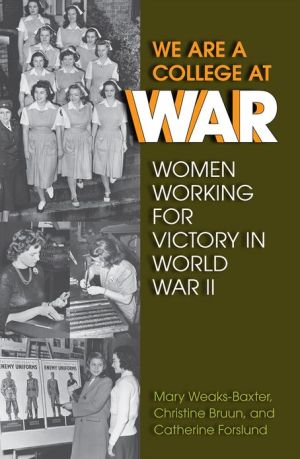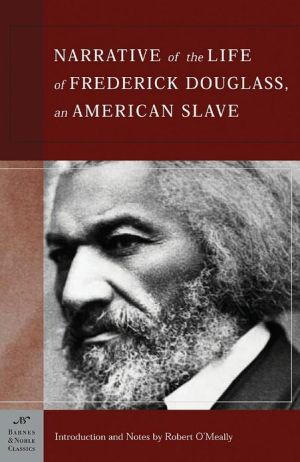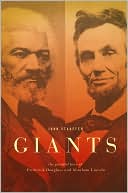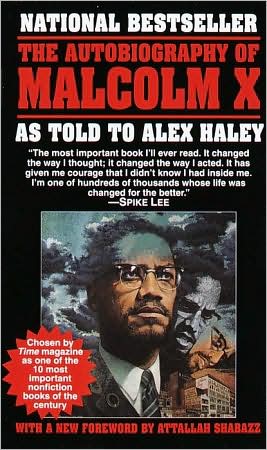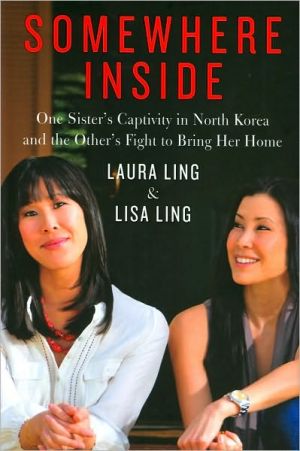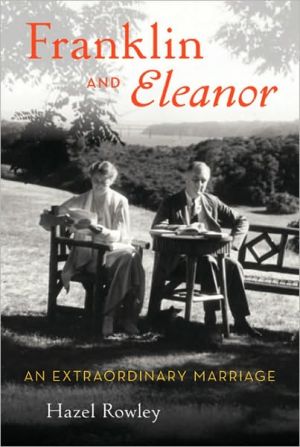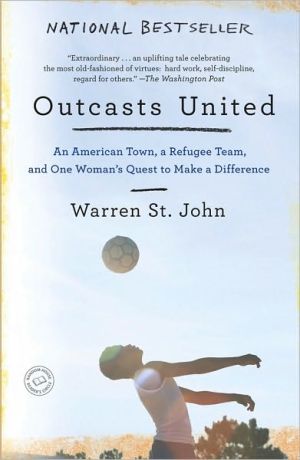We Are a College at War: Women Working for Victory in World War II
We Are a College at War weaves together the World War II experiences of students and faculty at Rockford College in Rockford, Illinois, to provide readers with a better understanding of the role American women and college students played during this defining period in U.S. history. Drawing on the Rockford community’s letters, speeches, and campus newspaper archives, the authors demonstrate how women claimed the right to be everywhere—in factories and other traditionally male workplaces, and...
Search in google:
We Are a College at War weaves together the World War II experiences of students and faculty at Rockford College in Rockford, Illinois, to provide readers with a better understanding of the role American women and college students played during this defining period in U.S. history. Drawing on the Rockford community’s letters, speeches, and campus newspaper archives, the authors demonstrate how women claimed the right to be everywhere—in factories and other traditionally male workplaces, and even on the front lines—and link their efforts to the rise of feminism and the fight for women’s rights in the 1960s and 1970s. In analyzing how the war influenced women’s education, this fascinating study shows the then all-female student body of Rockford College concerned with the crises of the world and involved in volunteerism and political activities. The authors describe how college women supported the troops using the traditional feminine “culture of care” outside the home; highlight the women who themselves joined the armed services and explain their reasons for choosing to enlist; and investigate how the war affected courtship and marriage. A central theme is the legacy of humanitarian Jane Addams, an 1881 Rockford alumna who established Hull-House in Chicago and won the 1931 Nobel Prize for Peace. The authors show how Addams’s example inspired Rockford’s students during the dark days of a world war. Faculty, staff, students, and alumnae of Rockford College participated in all aspects of the war and pushed this small midwestern college to become a commanding catalyst for change during this pivotal era. We Are a College at War reveals how the war years influenced women’s history in the twentieth century by offering a glimpse of the present-day roles of women through the legacy of the contributions of Rockford College women to the war effort.
\ Journal of Illinois HistoryIn We Are a College at War, authors Mary Weaks-Baxter, Christine Bruun, and Catherine Forslun recount the activist experiences of female students at Rockford College during and after World War II. Based on alumni letters and other archival material, the authors build a story of women's lives at one midwestern women's college. Chapter 1 begins with students' concerns about the war. Although some students questioned compulsory conscription—such as Elane Summers Hemith, who rode to Washington, D.C., to protest—most became involved in more traditional war efforts, such as knitting, sending packages to soldiers, donating to blood banks, and buying war bonds and stamps.\ Through these activities, the authors contend, women students practiced an "ethic of caring" (page 5), one built on the social feminist ideals of alumna Jane Addams. Indeed, Rockford College president Mary Ashby Cheek evoked the exemplary activism of Addams in her talks to students, encouraging them to contribute to democracy through their studies, extracurricular activities, and their activism. Specifically; students listened to speakers, who included presidents of women's colleges and political leaders. They joined chapters of national organizations, including the American Student Union and the Committee to Defend America by Aiding the Allies, which wrote a letter to Adolph Hitler in 1941 asking that he end the war.\ This interesting monograph provides a close look at female students' lives at one specific college during the war period. There are occasional references to students' experiences at other women's colleges, such as Wellesley and Mount Holyoke. Yet I wanted to know whether Rockford College students' experiences were so very different from those at other women's colleges, and if so, how? If anything, sometimes the authors draw too heavily on the relationship between Jane Addams and Rockford College. While Addams's words and examples of activism are evoked by Cheek and the students, the influence of Addams often seems overdrawn. For example, the authors argue that the dialogue and debates "followed the long tradition of Jane Addams" (page 24). But certainly they also arose out of the international curriculum and the desire to better understand the war itself.\ The authors also claim that Cheek thought of the liberal-arts curriculum as a way to rebuild the postwar society, a perspective that was consistent with "Addams's view" (page 39). Perhaps so, but more importantly the curriculum was similar to that at other women's colleges and even drew from earlier Rockford College presidents, such as Julia Gulliver. Last, Cheek used the salient ideas of progressive educators, such as developing the potential of' each individual student. Progressive practices included small classes for intellectual and personality growth, as well as for the promotion of democracy.\ If anyone, it was Cheek who was the incredible role model for the students. The archives at Rockford College are replete with records about her and might have been consulted more fully by the authors. For example, Check was active in professional organizations, including Phi Beta Kappa, the American Association of University Women, and the National Association of Deans of Women, as well as the community organizations such as the League of Women's Voters and the Rockford Woman's Club.\ Regardless of these suggestions the book is delightfully readable and written in a style that makes it accessible to many. The suggested readings also provide interested readers with valuable historical sources. Undoubtedly the book speaks to the strong activist traditions of Rockford College, nurtured by its strong female presidents, faculty, and the memory of Jane Addams." —Anne Meis Knupfer, Purdue University\ — Anne Meis Knupfer\ \ \ \ \ \ From the Publisher“This book provides welcome insight into an overlooked aspect of World War II—its connection to higher education. Focusing on Rockford College, the alma mater of Jane Addams, and providing a national context, the authors provide a fascinating story of how the war changed this women’s college, and how college students, staff, and faculty contributed to the war effort in diverse ways. Abundant use of first-person narratives enlivens discussion of such topics as the debate over neutrality before Pearl Harbor, students’ employment in defense plants and their service in the military and Red Cross, the presence of refugees as students and teachers, and students’ relationships with servicemen.”\ —Susan Hartmann, author of The Home Front and Beyond: American Women in the 1940s\ “Mary Weaks-Baxter, Christine Bruun, and Catherine Forslund bring to center stage the half of the Greatest Generation that usually gets short shrift in the history books, and show how these women—heroic and patriotic in their own right—stepped up in a time of war. They also clearly demonstrate how, whether consciously or not, these women carried on the legacy of early-twentieth-century suffragists, and sowed the seeds that flowered into the feminist movement in the 1970s.”\ —Emily Yellin, author of Our Mothers’ War: American Women at Home and at the Front during World War II\ \ \ \ Journal of Illinois History"In We Are a College at War, authors Mary Weaks-Baxter, Christine Bruun, and Catherine Forslun recount the activist experiences of female students at Rockford College during and after World War II. Based on alumni letters and other archival material, the authors build a story of women's lives at one midwestern women's college. Chapter 1 begins with students' concerns about the war. Although some students questioned compulsory conscription—such as Elane Summers Hemith, who rode to Washington, D.C., to protest—most became involved in more traditional war efforts, such as knitting, sending packages to soldiers, donating to blood banks, and buying war bonds and stamps.\ Through these activities, the authors contend, women students practiced an "ethic of caring" (page 5), one built on the social feminist ideals of alumna Jane Addams. Indeed, Rockford College president Mary Ashby Cheek evoked the exemplary activism of Addams in her talks to students, encouraging them to contribute to democracy through their studies, extracurricular activities, and their activism. Specifically; students listened to speakers, who included presidents of women's colleges and political leaders. They joined chapters of national organizations, including the American Student Union and the Committee to Defend America by Aiding the Allies, which wrote a letter to Adolph Hitler in 1941 asking that he end the war.\ This interesting monograph provides a close look at female students' lives at one specific college during the war period. There are occasional references to students' experiences at other women's colleges, such as Wellesley and Mount Holyoke. Yet I wanted to know whether Rockford College students' experiences were so very different from those at other women's colleges, and if so, how? If anything, sometimes the authors draw too heavily on the relationship between Jane Addams and Rockford College. While Addams's words and examples of activism are evoked by Cheek and the students, the influence of Addams often seems overdrawn. For example, the authors argue that the dialogue and debates "followed the long tradition of Jane Addams" (page 24). But certainly they also arose out of the international curriculum and the desire to better understand the war itself.\ The authors also claim that Cheek thought of the liberal-arts curriculum as a way to rebuild the postwar society, a perspective that was consistent with "Addams's view" (page 39). Perhaps so, but more importantly the curriculum was similar to that at other women's colleges and even drew from earlier Rockford College presidents, such as Julia Gulliver. Last, Cheek used the salient ideas of progressive educators, such as developing the potential of' each individual student. Progressive practices included small classes for intellectual and personality growth, as well as for the promotion of democracy.\ If anyone, it was Cheek who was the incredible role model for the students. The archives at Rockford College are replete with records about her and might have been consulted more fully by the authors. For example, Check was active in professional organizations, including Phi Beta Kappa, the American Association of University Women, and the National Association of Deans of Women, as well as the community organizations such as the League of Women's Voters and the Rockford Woman's Club.\ Regardless of these suggestions the book is delightfully readable and written in a style that makes it accessible to many. The suggested readings also provide interested readers with valuable historical sources. Undoubtedly the book speaks to the strong activist traditions of Rockford College, nurtured by its strong female presidents, faculty, and the memory of Jane Addams." --Anne Meis Knupfer, Purdue University\ \ \
